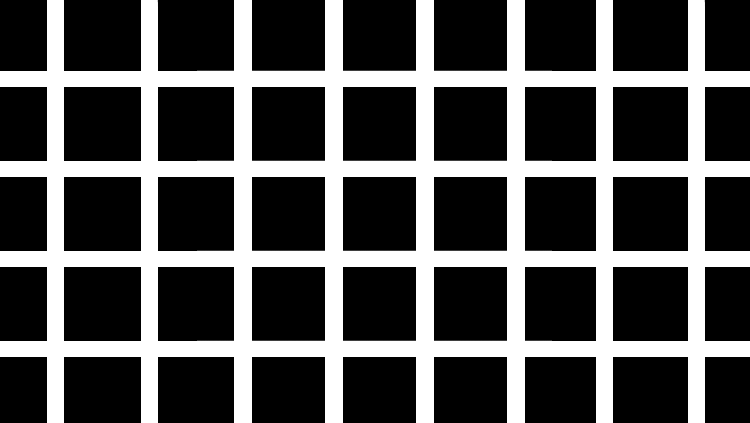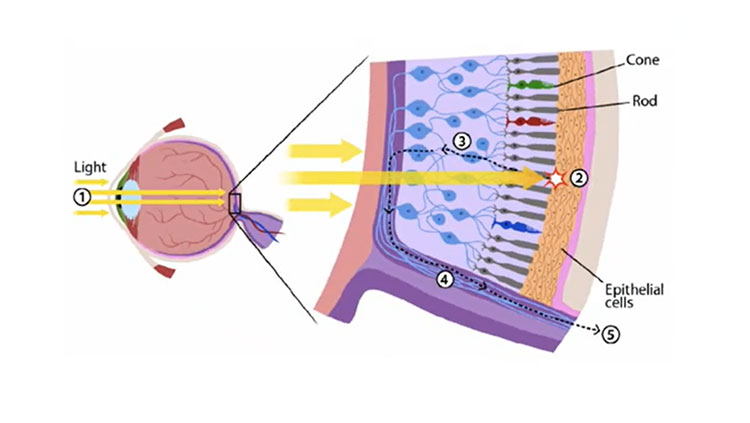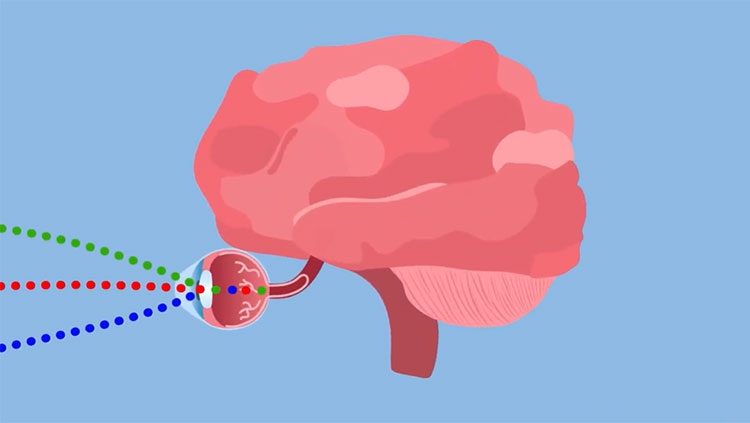Not So Black and White
- Published10 Nov 2017
- Reviewed10 Nov 2017
- Author Charlie Wood
- Source BrainFacts/SfN

Can you see them? Flickering dark spots dance at the intersections, only to vanish under direct observation. Don't worry; your device is fine. The blame for this grid’s trickery lies with the cells of your optical nerve.
Retinal ganglion cells ferry information from light-sensitive eye cells deep into the brain, and they’re especially good at picking out edges. Areas of high contrast (the middle of a “street” for example) really make them sing, while areas with more white (“crossroads,” for example) produce less of a response.
That edge-induced excitement exaggerates the black square borders, making the “streets” seem extra bright in the middle, and creating ghostly grey areas by contrast that hover at the “crossroads.” But only in your peripheral vision. Gazing at any particular intersection employs a part of the eye with ganglia sharp enough to focus on an area much smaller than the street width, and the blotch disappears without a trace.
CONTENT PROVIDED BY
BrainFacts/SfN
References
Spillman L. The Hermann grid illusion: a tool for studying human perceptive field organization. Perception. June 1, 1994.
Also In Vision
Trending
Popular articles on BrainFacts.org


















